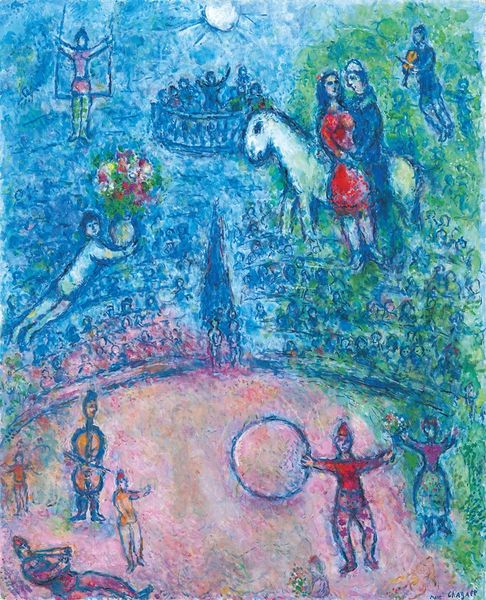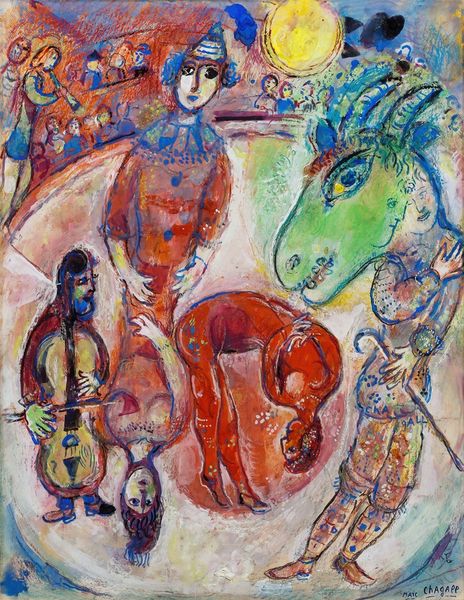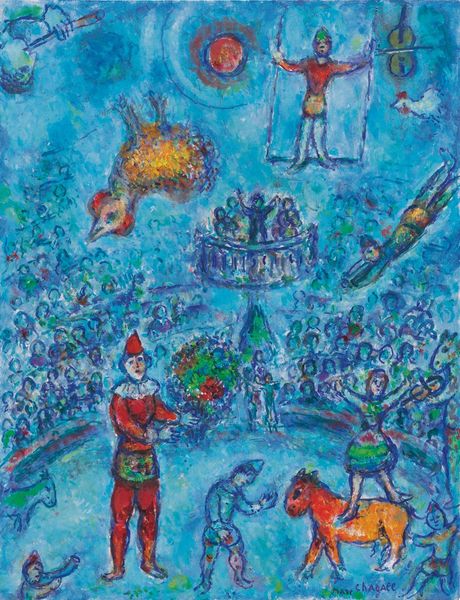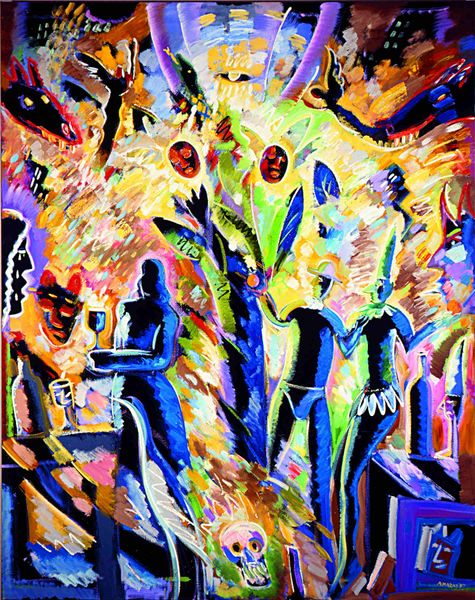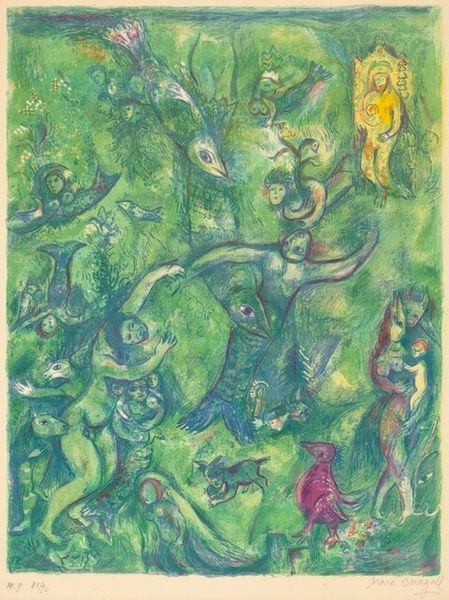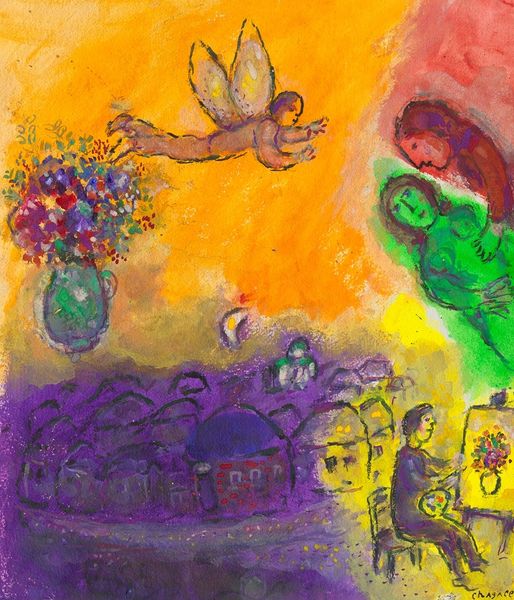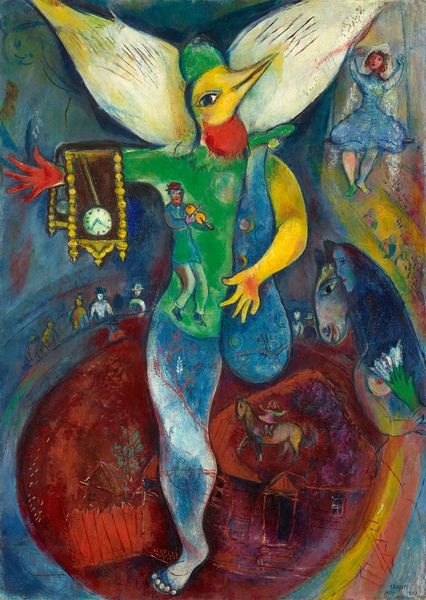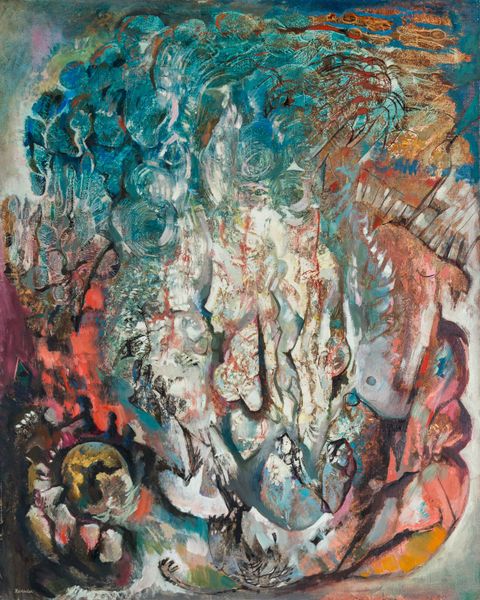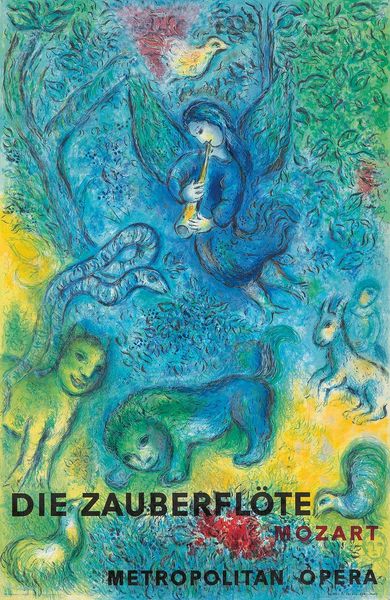
Copyright: Modern Artists: Artvee
Curator: Welcome. Before us hangs Marc Chagall’s "Fête autour de l’arc en ciel," painted circa 1982. A joyous, fantastical landscape rendered in oil. What strikes you first about this canvas? Editor: Pure, unadulterated joy, wouldn’t you say? The colors explode off the canvas. It’s a childlike vision of celebration, free from constraints of reality. The figures, the animals, the houses—all swirling together in a dreamlike dance. Curator: Indeed. Chagall's personal history certainly shaped this "naive" style. The artist incorporated Jewish folk art traditions into painting. Also, early on he became involved with the Russian avant-garde. After 1910, his aesthetic synthesized the emerging idioms of Fauvism, Expressionism, and Cubism, into his signature approach to fantasy and figuration. Editor: It’s impossible to separate Chagall’s biography from his art, particularly his Jewish identity. Looking closely, you begin to see some challenging ideas related to social harmony, maybe some cultural collision. Do you agree that that’s going on in the canvas too? Curator: Undoubtedly. Consider Chagall's biography during the tumultuous 20th century. He witnessed firsthand displacement and the horrors of war, which he always filtered with optimism in his art. He wanted to emphasize universal human emotions and commonality through the image of shared life and togetherness. Editor: I read these vibrant colours as defiance against the greyness and violence of reality. Even the upside-down figures have a joyful ease. This piece is deeply affirmative in a sociopolitical context that suggests resistance against a cultural environment saturated with alienation, and often outright fascism. Curator: Chagall aimed at this message with great sophistication. It also is quite revealing how such a colorful surface can also evoke profound emotions. In his older years, Chagall seemed increasingly determined to capture what he had lost in Europe and share with everyone his artistic joy. Editor: Precisely. And through this fantastical celebration, the piece underscores the profound power of shared memory and collective identity—something so often denied to marginalized communities. Curator: So Chagall used his memories, his art and his identity to push back. Editor: I see now he reclaims agency. He transforms grief and horror into art. Curator: I will never forget his contributions to the visual and social culture of optimism!
Comments
No comments
Be the first to comment and join the conversation on the ultimate creative platform.
